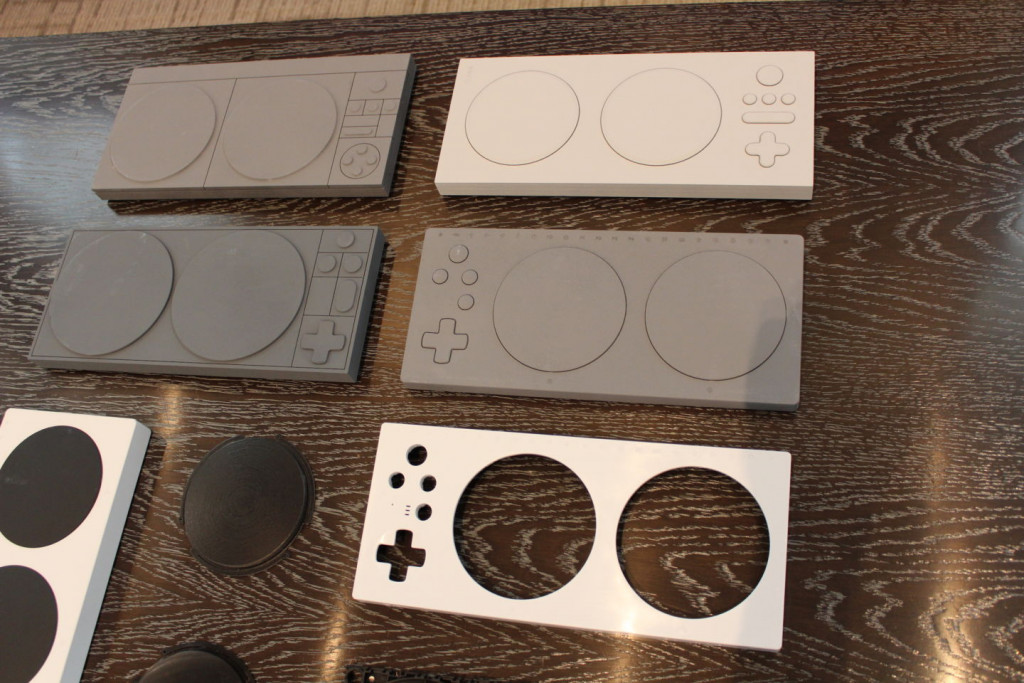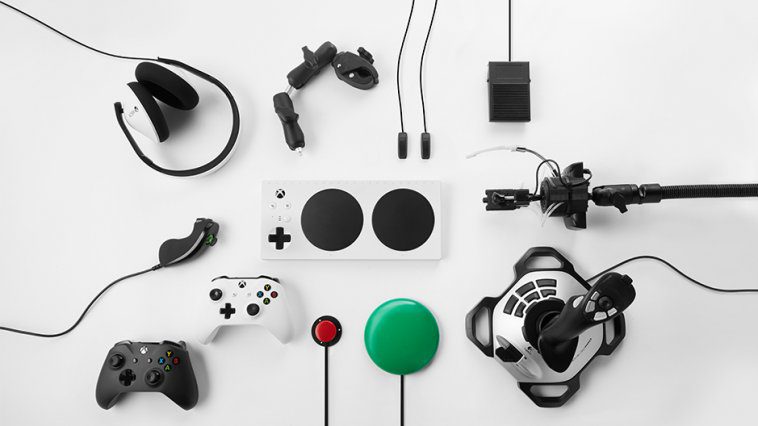Developed at Microsoft’s expansive campus in Redmond, Washington, the Xbox Adaptive Controller is a first of its kind for the company: a hardware peripheral created with an inclusive design approach.
In the world of console video gaming, exclusivity is a desirable thing. Exclusive games and studio partnerships give enough differentiation to draw some fans to one platform over the others.
With that said, these highly designed machines have the unintended consequence of a rather ugly form of exclusivity. In video gaming, through mere strokes of the keyboard or flicks of thumb-sticks, you compel pixels to victory. Simple.
Unless, that is, you have limited mobility. Then the ergonomically designed controllers, optimized for able-bodied hands, introduce a world of complications. For gamers with disabilities, it can necessitate expensive workarounds that exist outside of the video game platform’s ecosystem of hardware.
Following a journey of sorts that began way back in 2014 with a chance discovery on Twitter, and leading to the establishment of the Inclusive Tech Lab, Microsoft has revealed an adaptable controller for gamers that require an alternative to the traditional handheld game controller.
Dubbed the Xbox Adaptive Controller (XAC), this sleek slate of white plastic, big buttons and ports for peripherals is Microsoft’s solution for those of the near 2-billion video game players of the world with disabilities.
“As an industry, when you start to hit that kind of impact act in terms of the broad base of people that interact with your art form, I do think we have a social responsibility.” said Phil Spencer, head of Microsoft’s Xbox division.

Designed with Everyone, for Everyone
The notion of an accessibility minded controller first caught the attention of an engineer at Microsoft after discovering a photograph on Twitter of the work of Warfighter Engaged. This was 2014, and the nonprofit was already ahead of the curve with its program producing custom video game devices for wounded military veterans.
In the following few years, the idea existed at Microsoft as a project of few employees for the company’s Ability Summit hackathons. Yearly iterations of the concept garnered support within the company, until the pieces aligned with an effort of Microsoft’s to improve inclusivity and diversity in gaming.
In the summer of 2017, the Inclusive Tech Lab was born, and it is here that the Xbox Adaptive Controller took shape. A hub in which Microsoft employees could better understand the difficulties faced by gamers with disabilities, this fed into an inclusive design philosophy that saw the XAC developed in direct collaboration with those the company hoped to address with the device.
Rather than going overboard with an array of buttons, levers, switches and other mechanisms to broadly cater to everyone, but really no one specifically, the end result is a device that lets go of the control of the experience that Microsoft might typically exert. Which is exactly the point.
Instead of cramming as many of the aforementioned doodads to paint with the broadest brush, the XAC instead serves as a hub of sorts. In addition to two main “confirm” and “back” buttons, a bank of 3.5mm jacks features on its rear surface. Each port corresponds to one of the Xbox games console’s 19 standard controller buttons.
The 3.5mm jack is a common input across the plethora of existing input peripherals for limited-mobility gamers, meaning that the XAC’s solution invites a custom solution for the individual.

Prototyping a Better Pad
Though it’s not specified where the XAC’s design physically took shape, it would be a sensible bet to say the prototyping stages were handled at Microsoft’s Building 87. An advanced additive manufacturing center, Building 87 is where the company’s Xbox One X games console took shape over 75 design iterations, all 3D printed for evaluation.
Imagery has surfaced to suggest the same for the XAC, with 3D printed shells of the controller showing a subtle evolution with button layouts clarifying into the simple arrangement we see on the final design.
Where such custom solutions were previously the sole domain of hardware hackers, non-profits, charities and healthcare institutions, Microsoft’s XAC seeks to complement what already exists.
The company claims the project came about not through any desire to gain an edge over its competitors, nor to create a profitable new segment of hardware for its business. It is a commitment to the company’s mission to make gaming more accessible.
The XAC will be priced at $99 — on par with Microsoft’s existing specialized controllers, and considerably less that the individual inputs that will plug into the XAC. It is slated to launch “later this year”.
Website: LINK


